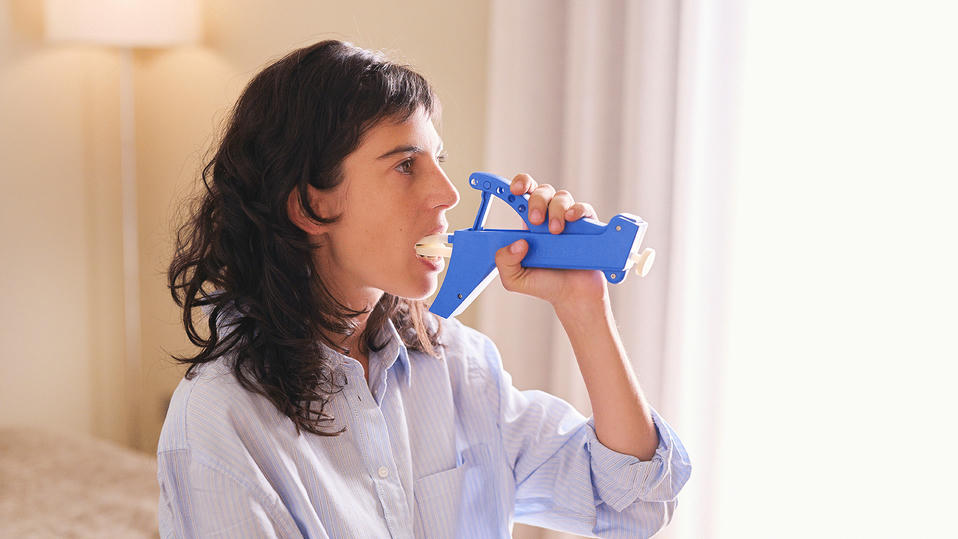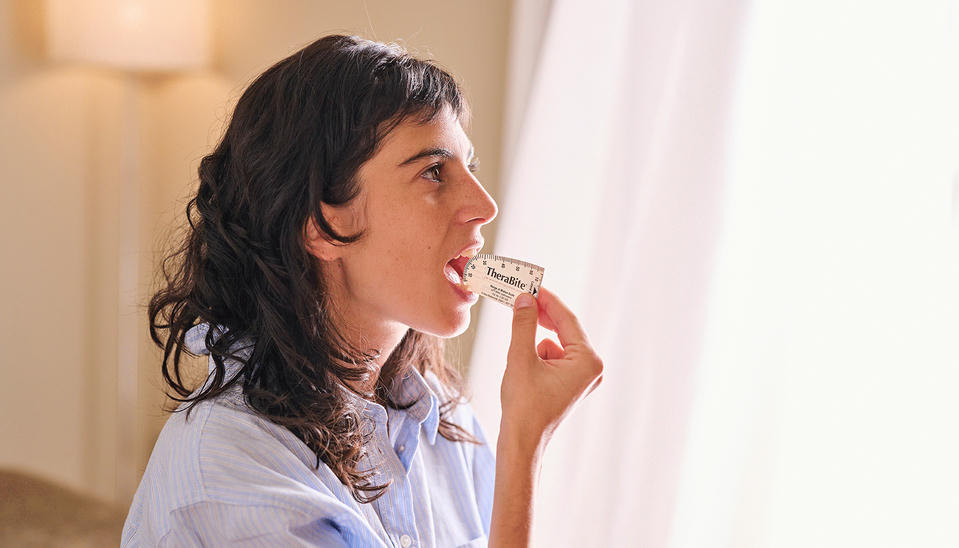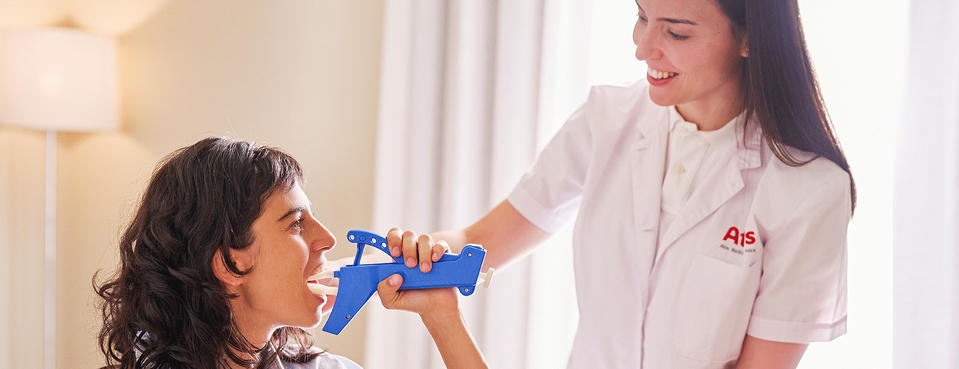Trismus
Trismus can be divided into two types: one where the soft tissues or muscles are damaged and one where the bones or joints are affected. There are many possible causes of this condition, one being related to head and neck cancer. Head and neck cancers are commonly treated with surgery, radiation or a combination of the two, which can lead to complications such as limited jaw mobility (trismus). Thankfully, there are ways to prevent and treat trismus.

What is trismus?
Trismus is a condition where a patient experiences limited jaw mobility after surgery and radiation treatment. It causes pain, interferes with eating and speaking, and can negatively affect quality of life. These difficulties can occur at a time when proper nutrition and oral hygiene are important for recovery. Not all head and neck cancers patients will experience trismus, but the condition has a reported prevalence of 37% in irradiated cancers patients up to 3-years after treatment(1).
Therapy
TheraBite Jaw Motion Rehabilitation System is a hand-operated device that is clinically proven to help to prevent and treat trismus by improving the strength and endurance of the muscles of mastication (chewing)(2, 3, 4). Passive motion and stretching exercises(5) with TheraBite are an effective form of jaw therapy as shown in the guide below.
The TheraBite Jaw Mobilizer is held in the hand during use, with the mouthpieces placed between the teeth in the upper and lower jaws. The user then applies pressure to the lever thereby adding resistance to the closing of the jaws.

TheraBite Jaw Motion Rehabilitation System is designed to accomplish two treatment objectives:
Increase the range of motion of the jaw(5, 6)
- Stretch connective tissue
- Strengthen weakened muscles
- Mobilize joints

Pain reduction(6, 7)
- Reduce joint inflammation
- Reduce muscle pain

Protocol
To get the best results from using TheraBite, we recommend patients try the following two routines:
- The 5-5-30 Protocol - for trismus caused by radiation induced fibrosis or surgical scarring (longer stretches):
5 times per day, 5 stretches, 30 seconds followed by a 30 second pause - The 7-7-7 Protocol - for limited mobility of the joint:
7 seconds followed by a 7 second pause, 7 stretches, 7 times per day
Curious to learn more about how TheraBite can help your patients treat Trismus? Please contact us for more information.
References:
1 Aghajanzadeh S, Karlsson T, Engström M, Tuomi L, Finizia C. A prospective 5-year study of trismus prevalence and fluctuation in irradiated head and neck cancer patients. Acta Otolaryngol. 2022;142(7-8):620-626.
2 Montalvo, C., et al., Impact of exercise with TheraBite device on trismus and health-related quality of life: A prospective study. Ear Nose Throat J, 2017. 96(1): p. E1-E6.
3 van der Molen L, van Rossum MA, Burkhead LM, Smeele LE, Rasch CR, Hilgers FJ. A randomized preventive rehabilitation trial in advanced head and neck cancer patients treated with chemoradiotherapy: feasibility, compliance, and short-term effects. Dysphagia. 2011;26(2):155-70.
4 Pauli N, Andrell P, Johansson M, Fagerberg-Mohlin B, Finizia C. Treating trismus: A prospective study on effect and compliance to jaw exercise therapy in head and neck cancer. Head Neck. 2015;37(12):1738-44.
5 Kraaijenga, S., et al. (2014). "Treatment of myogenic temporomandibular disorder: a prospective randomized clinical trial, comparing a mechanical stretching device (TheraBite(R)) with standard physical therapy exercise." Cranio 32(3): 208-216.
6 Sebastian MH, Moffett BC. The effects of continuous passive motion on the temporomandibular joint after surgery. Part II. Appliance improvement, normal subject evaluation, pilot clinical trial. Oral Surg Oral Med Oral Pathol. 1989;67(6):644-53.
7 Gassner RJ, Buckley MJ, Studer RK, Evans CH, Agarwal S. Interaction of strain and interleukin-1 in articular cartilage: effects on proteoglycan synthesis in chondrocytes. Int J Oral Maxillofac Surg. 2000;29(5):389-94.
8 Standley, P.R. and K. Meltzer, In vitro modeling of repetitive motion strain and manual medicine treatments: potential roles for pro- and anti-inflammatory cytokines. J. Bodyw. Mov Ther, 2008. 12(3): p. 201-203.